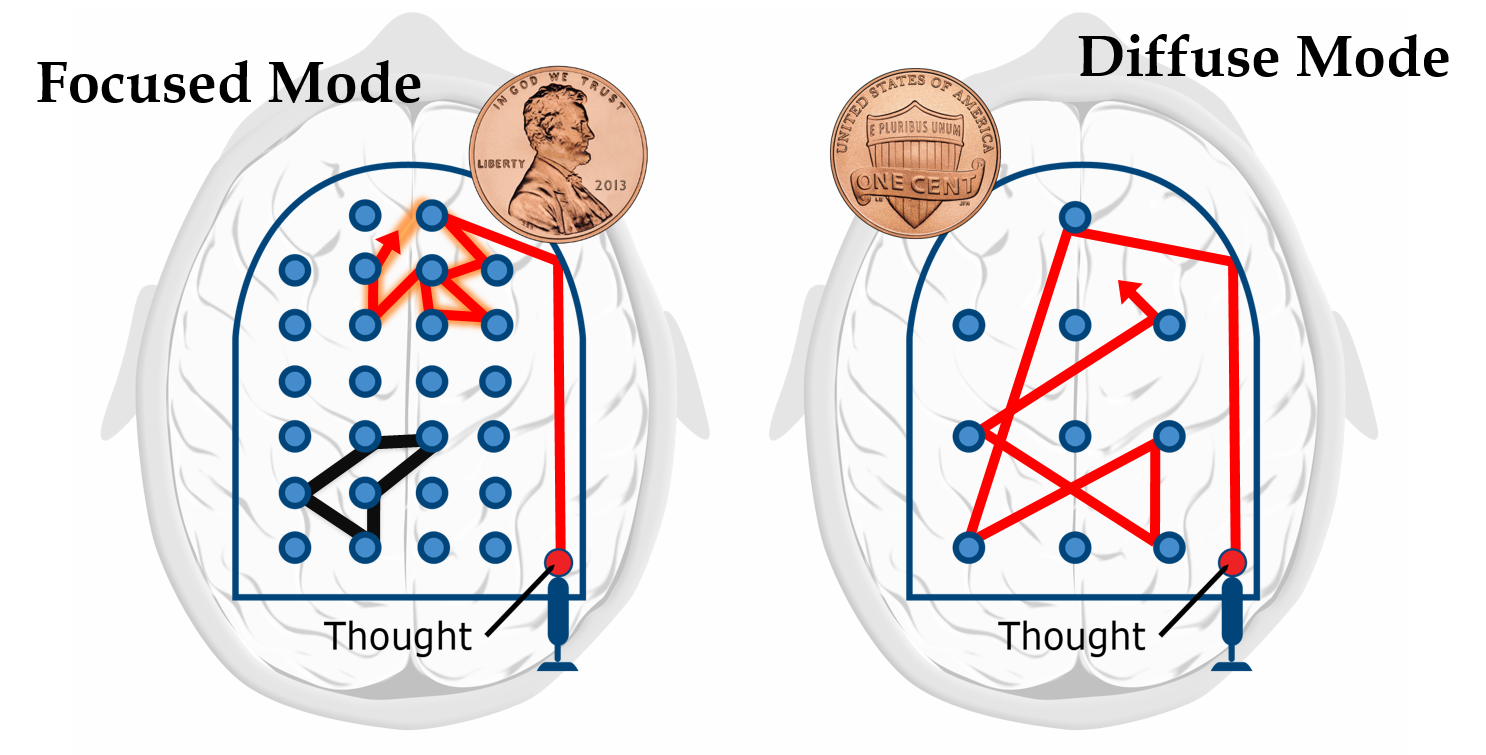Learning How to Learn
I recently completed Dr. Barbara Oakley’s very useful course, Learning How to Learn.
I gained so many shareworthy insights that are helping me to study and remember things more efficiently and confidently that summarizing them in a post made much sense.
1. Focused mode v.s. diffuse mode
The most fundamental and mind shifting concept from the course is that the brain continuously alternates between two different modes, each having unique characteristics and ramifications for the learning process: the focused mode and the diffuse mode.

The focused mode is what we most commonly associate with the process of learning: it requires sustained concentration on understanding the new material, with minimal distractions.
In the focused mode, the brain is consciously and actively trying to triangulate the new bits of information through the very specific and tightly-bound prisms of what the brain already understands and knows. That’s why analogies, metaphors, and mnemonic devices help to not only remember new information later on, but to actually also properly learn it in the first place.
This is your brain actively processing and creating new information, in a process neuroscientists and cognitive psychologists call chunking, which we’ll get to later. Time spent in focused mode is critical to initiate and set into motion the learning process.
The diffuse mode, however, is less commonly known but just as equally important to the learning process. The key to understanding the brain’s diffuse mode is that it is a process that is happening subconsciously, without you even being aware of it. Indeed, it’s actually happening while you are just going for a mindless jog, taking a shower, eating, or even sleeping.
During this time of repair and consolidation, your brain is actively making sense of all the information it has gathered, triaging the important from the irrelevant, the wheat from the chaff, forming new connections between all the relevant information, trying to understand and make sense of the bigger picture, and erasing and removing information that’s no longer being used.
The important key here is to NOT focus on anything, take a break, and get enough sleep, so that your brain can be free to essentially rebuild and refactor itself to be the most efficient and useful version of itself.
2. Chunking
What is chunking, and how many chunks can your working memory hold at the same time? Chunking is the mental leap that helps you unite new bits of information into meaning during the focused mode.
A neural chunk is the set of neurons that are bound together through a common meaning or use–they “fire” simultaneously. Your working memory can only hold about four chunks at the same time (in the pre-frontal cortex).
This explains why, when you are first learning new material, you have a hard time making sense of much of it–there’s too many chunks to process, and your brain is overloaded.
However, over time, you learn to bundle what used to be many chunks into one chunk, which allows you to actually use that one chunk together with other chunks at the same time (i.e. you’re able to apply the chunk to new situations you’ve never faced before).
3. Learning towards mastery
This process of chunking one chunk, then another chunk, and then chunking all those chunks into one chunk, is a long and lovely road of learning towards mastery.
A master of a skill is someone who has been able to seemlessly integrate vast bodies of knowledge–i.e., many chunks and subchunks–into one chunk that they can easily call upon anytime. They don’t even need to consciously think about it–they are in a state of flow.
This takes repetition of a skillset, over and over again through as long a period of time as possible, so that your brain retains the information and does not discard it during the diffuse mode.
4. Question & Answer
-
What can negatively impact your ability to chunk information?
Stress, anger, lack of sleep, and fear can all block your ability to chunk, which explains why it’s hard to think properly under these situations. Lack of context also makes it harder to apply and remember chunks you’ve already built.
-
What are the three processes involved simultaneously in making chunks?
To form a new chunk, you should: 1) Break up a main chunk into smaller and smaller chunks (bottom up), while simultaneously 2) understanding patterns to unite them all into a main chunk (top down). Finally, you also need to understand 3) the context in which to apply and not to apply the chunk (e.g. examples)
-
What are the three different neuromodulators (i.e. pleasure chemicals) released by the brain, and how do they affect learning?
When you are learning something, your brain is subconsciously and simultaneously classifying the value of that learning to your future wellbeing–which may cause various levels of three different reward chemicals to be released.
Acetylcholine gets released when learning new information, and helps with memory and focused learning.
Dopamine gets released when we receive an unexpected reward, a surprise, and actually encourages us to work towards longterm goals.
Finally, serotonin is released when we feel good about our social network and value to others.